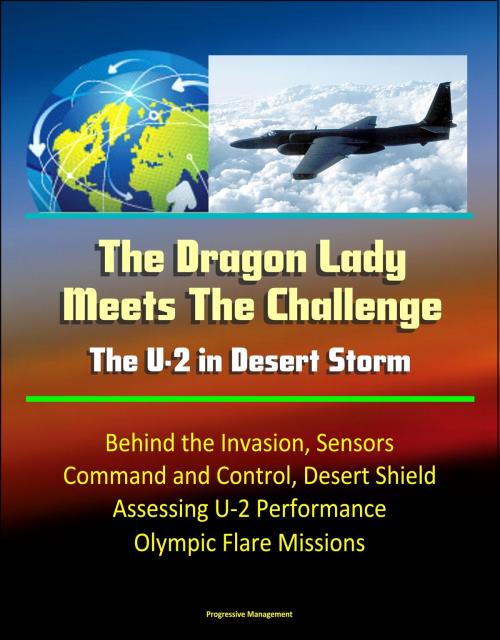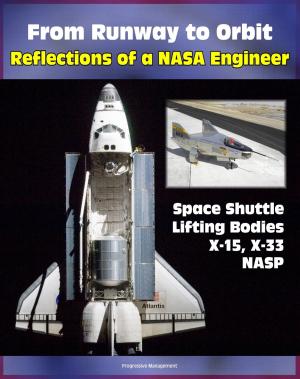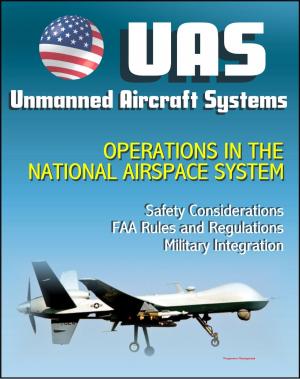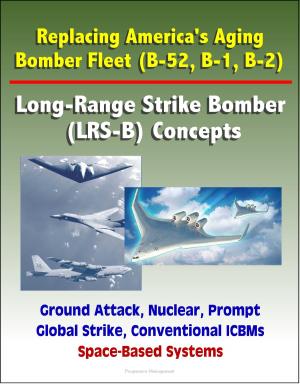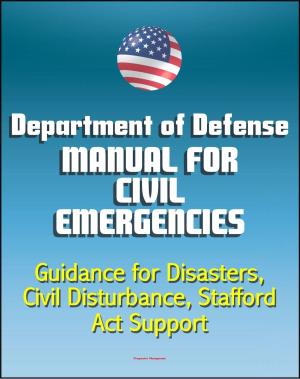The Dragon Lady Meets The Challenge: The U-2 in Desert Storm - Behind the Invasion, Sensors, Command and Control, Desert Shield, Assessing U-2 Performance, Olympic Flare Missions
Nonfiction, History, Middle East, Persian Gulf War, Military, Aviation| Author: | Progressive Management | ISBN: | 9781310550171 |
| Publisher: | Progressive Management | Publication: | April 26, 2015 |
| Imprint: | Smashwords Edition | Language: | English |
| Author: | Progressive Management |
| ISBN: | 9781310550171 |
| Publisher: | Progressive Management |
| Publication: | April 26, 2015 |
| Imprint: | Smashwords Edition |
| Language: | English |
Professionally converted for accurate flowing-text e-book format reproduction, this excellent monograph details the use of the U-2 spy plane during the 1991 Persian Gulf War, the liberation of Kuwait from Iraq.
American President George Bush reacted quickly to Iraq's invasion of Kuwait. On 4 August he met with General H. Norman Schwarzkopf, Central Command (CENTCOM) Commander, and Lieutenant General Charles A. Horner, Central Air Command (CENTAF) Commander to discuss the situation. The generals explained to the president the only Air Force assets in the area were two KC-135s operating in the United Arab Emirates since 24 July and fourteen F-111Es and four F-16s in Turkey. No one knew if Turkey would allow air attacks on Iraq from Turkish soil. There were no other American forces in the area and the nearest two aircraft carriers were days away. There was little the United States could do, unless Saudi Arabia or another nation in the area allowed America to base troops there. The president dispatched Secretary of Defense Richard B. Cheney, Schwarzkopf, and Horner to Saudi Arabia to talk with King Fahd. Armed with satellite photos showing the Iraqi deployment along the Saudi border, the three persuaded King Fahd of the imminent danger to his country. On 6 August the king asked the United States to send forces to Saudi Arabia to help defend his nation from possible attack.
By 6 August the 9th Strategic Reconnaissance Wing at Beale AFB, California had already been alerted for possible deployment to the Middle East. Colonel Randall A. Juracek, Deputy Commander Maintenance (DCM), and his staff started gathering the necessary assets. Unfortunately, world events had overtaken Air Force reconnaissance plans, which had been directed toward a major war in Europe against the Soviet Union. There were no Middle Eastern contingency plans and no unit type codes (UTC) for such a deployment. Wing planners also knew very little about possible operating locations in Saudi Arabia and the surrounding countries. Colonel William P. Morton, Jr., Colonel Juracek's assistant, recalled sitting around the battle staff table studying old Central Intelligence Agency guides and aeronautical maps of the Middle East to learn which runways would support the U-2.
Dedication * Chapter 1 Behind the Invasion * Chapter 2 The Wing Responds * Chapter 3 The U-2 and Its Sensors * Chapter 4 Command and Control * Chapter 5 Desert Shield * Chapter 6 Desert Storm * Chapter 7 Assessing the U-2's Performance * Appendix 1 OLYMPIC FLARE Missions * Appendix 2 Distinguished Flying Crosses * Appendix 3 Bronze Star Medals
Professionally converted for accurate flowing-text e-book format reproduction, this excellent monograph details the use of the U-2 spy plane during the 1991 Persian Gulf War, the liberation of Kuwait from Iraq.
American President George Bush reacted quickly to Iraq's invasion of Kuwait. On 4 August he met with General H. Norman Schwarzkopf, Central Command (CENTCOM) Commander, and Lieutenant General Charles A. Horner, Central Air Command (CENTAF) Commander to discuss the situation. The generals explained to the president the only Air Force assets in the area were two KC-135s operating in the United Arab Emirates since 24 July and fourteen F-111Es and four F-16s in Turkey. No one knew if Turkey would allow air attacks on Iraq from Turkish soil. There were no other American forces in the area and the nearest two aircraft carriers were days away. There was little the United States could do, unless Saudi Arabia or another nation in the area allowed America to base troops there. The president dispatched Secretary of Defense Richard B. Cheney, Schwarzkopf, and Horner to Saudi Arabia to talk with King Fahd. Armed with satellite photos showing the Iraqi deployment along the Saudi border, the three persuaded King Fahd of the imminent danger to his country. On 6 August the king asked the United States to send forces to Saudi Arabia to help defend his nation from possible attack.
By 6 August the 9th Strategic Reconnaissance Wing at Beale AFB, California had already been alerted for possible deployment to the Middle East. Colonel Randall A. Juracek, Deputy Commander Maintenance (DCM), and his staff started gathering the necessary assets. Unfortunately, world events had overtaken Air Force reconnaissance plans, which had been directed toward a major war in Europe against the Soviet Union. There were no Middle Eastern contingency plans and no unit type codes (UTC) for such a deployment. Wing planners also knew very little about possible operating locations in Saudi Arabia and the surrounding countries. Colonel William P. Morton, Jr., Colonel Juracek's assistant, recalled sitting around the battle staff table studying old Central Intelligence Agency guides and aeronautical maps of the Middle East to learn which runways would support the U-2.
Dedication * Chapter 1 Behind the Invasion * Chapter 2 The Wing Responds * Chapter 3 The U-2 and Its Sensors * Chapter 4 Command and Control * Chapter 5 Desert Shield * Chapter 6 Desert Storm * Chapter 7 Assessing the U-2's Performance * Appendix 1 OLYMPIC FLARE Missions * Appendix 2 Distinguished Flying Crosses * Appendix 3 Bronze Star Medals
